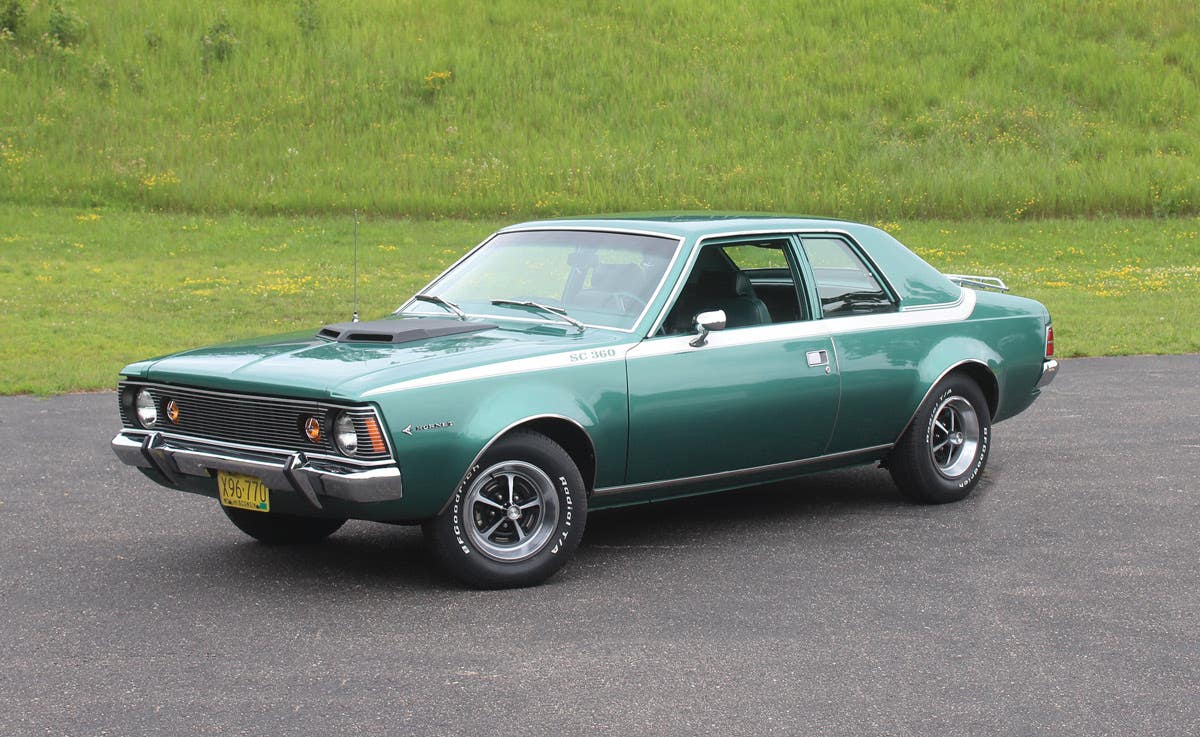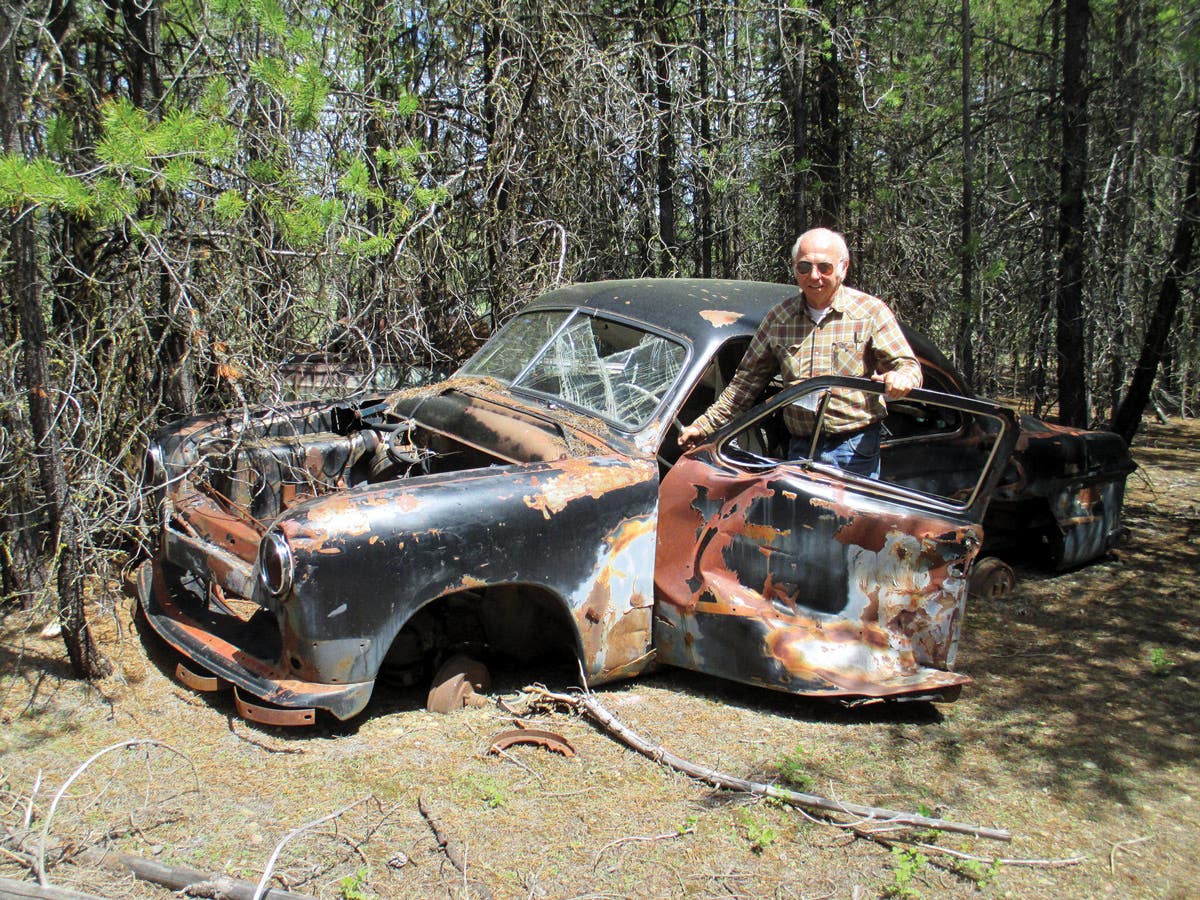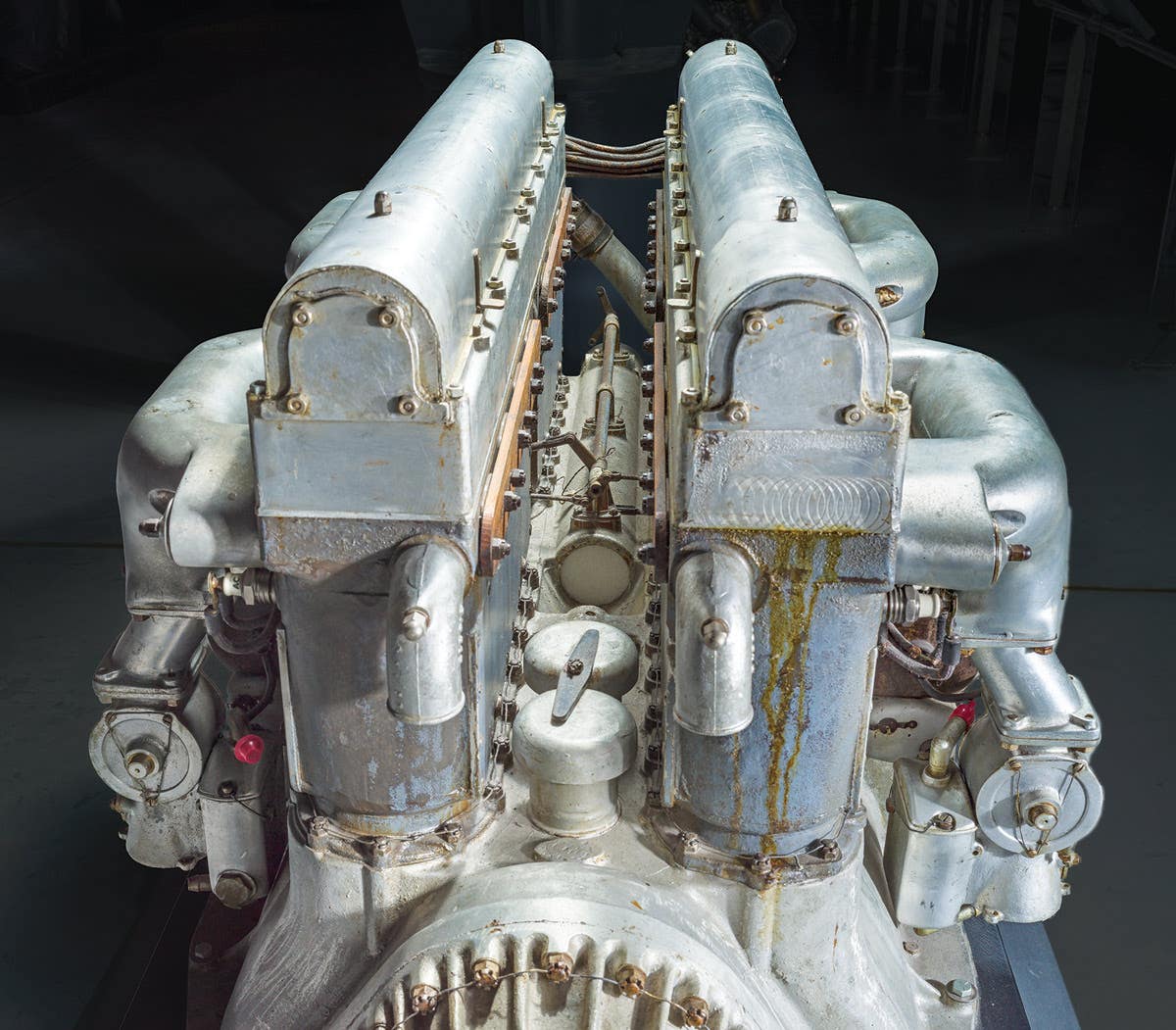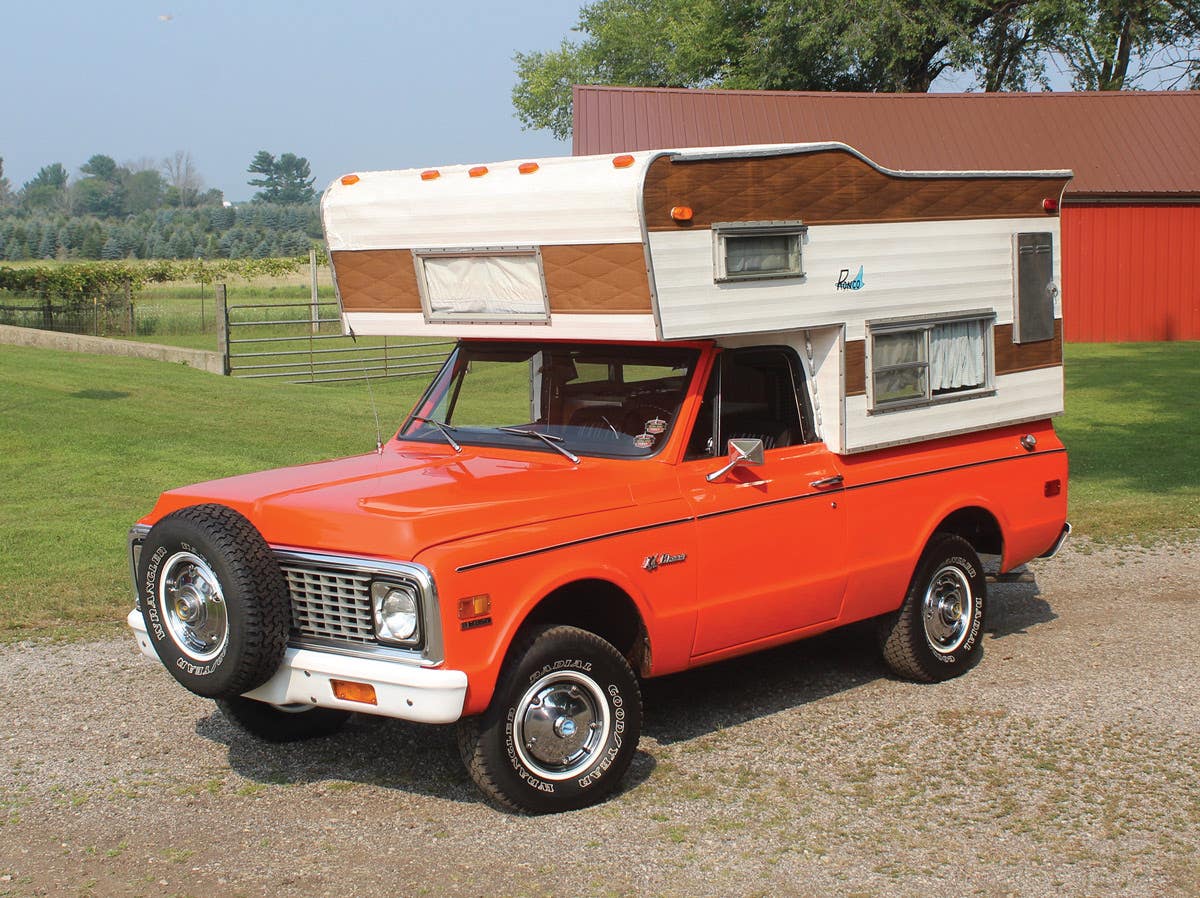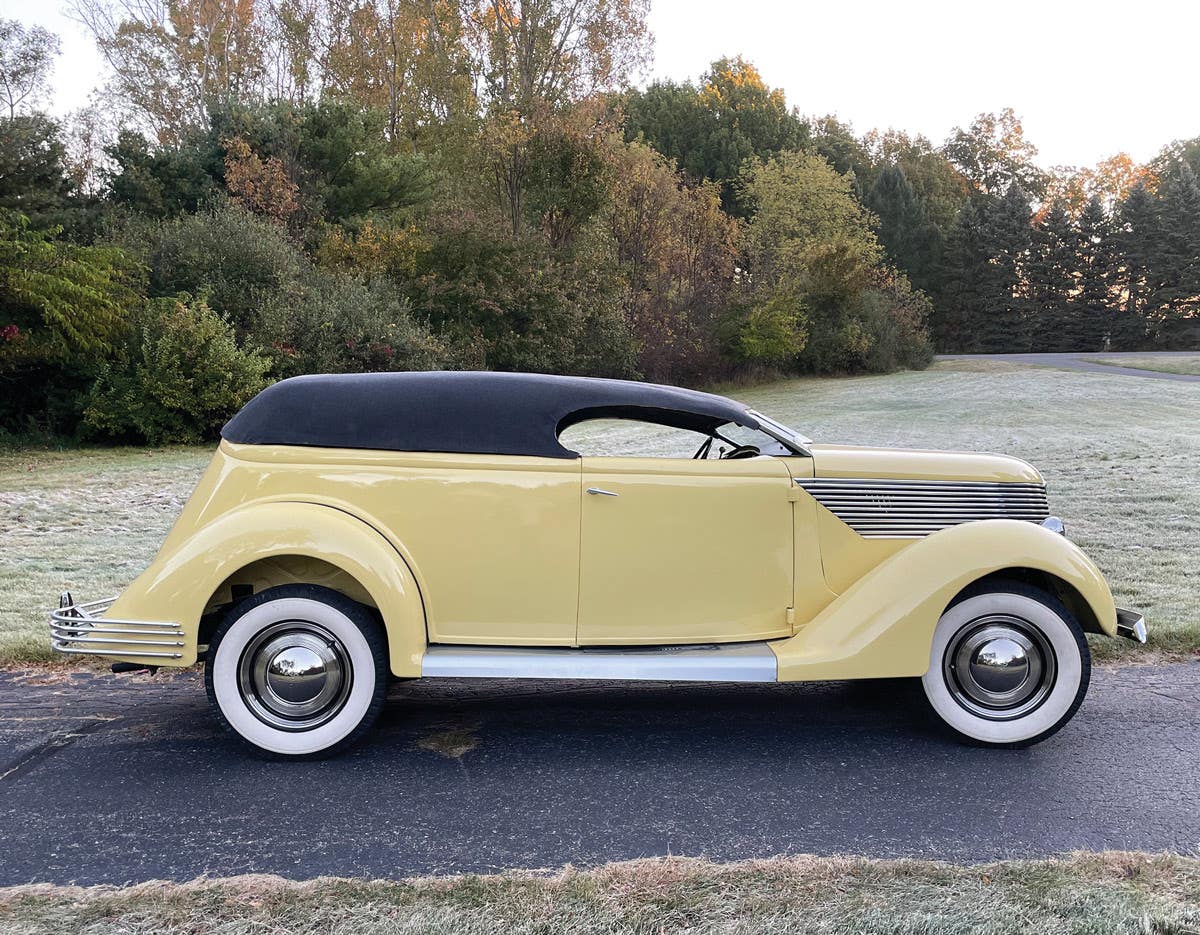The Mysterious Packard Monte Carlo: Part IV
Part IV, the final installment of the uncovering of the mystery behind the Packard Monte Carlo.
Editor’s note: The following is the fourth installment of the story of the Packard Monte Carlo hardtop and convertible, two show cars or prototypes based on Packard 22nd Series cars. Today, only images of the Monte Carlo hardtop remain, while only a convertible with very similar unique features to the photographed Monte Carlo hardtop survive. In this installment, Geoffrey Hacker of Undiscovered Classics weaves the two cars’ tales together, and uses each to try to answer questions about the other from what remains.
Focus of research
We don’t have the mock up of first Monte Carlo hardtop to review today. Nor do we have Richard Arbib, its designer, or Charles Russell Feldmann, the president of Henney, to answer the questions of how and why the car was built. But we do have 40 years of research on the Packard Monte Carlo by George Hamlin, Leon Dixon and Robert Neal. We also have original photos of the Custom 8 convertible-based hardtop mockup from 1949, and you might be surprised how much is revealed after studying the images. And, of course, most importantly, we have what we found — the Super 8 Monte Carlo convertible itself.
In the spring of 2024, good friend Robin James began heading south from his home in Canada to Undiscovered Classics headquarters in Tampa, Fla. He was coming down to help get our 1959 Salvatore Salerno Devin ready for its debut at The Amelia concours d’elegance. After the show, I persuaded him to stay in Florida, away from the arctic chill of Canada, for a few more weeks to look more closely at the Packard Monte Carlo convertible. Robin did more than that. He took the lead on working on the car and resurrecting it and never looked back. It was an exciting few weeks to see what magic he would do with the car.
From what we could tell, the car had not been started or worked on since the 1950s. He first focused on the engine and miraculously had it running as smooth as silk. Next, he freed up the steering and shifting linkage and rebuilt the fuel system and brakes. He eventually began completing enough test laps in my neighborhood that all my neighbors became used to seeing the car cruising around. Finally, we both worked together to see what we could learn by studying how it was built. Our observations are discussed below.
The convertible’s current condition
The mileage currently reads 47,738, and the speedometer and odometer still work. Some of those miles advanced as Robin drove it around the neighborhood. When Robin had the car running and driving, everything started coming back to life.
From the normal wear points on the car — pedals, striker plates, upholstery — and the overall condition of the rest of the car (a general lack of significant scratches and dents), it appears the Monte Carlo convertible led a quiet and safe life, supporting the low mileage on the odometer. Interestingly, it has a custom-made heavy-duty hitch on the rear. Was it for one of those grand wooden pleasure boats? We may never know. It’s just that the car wasn’t put away with preservation in mind.
By the current condition of the Monte Carlo, it’s clear that its modifications were made very early in its life. Upon inspection of the body, paint, engine and interior, nothing new seems to have been done since it was first constructed. It looks like when they finished driving it, they put it away in a barn or carport and never looked back.
Serial/production number:
The VIN on the Packard Monte Carlo is 2279-9182. All 1948 Packard Super 8s started with a designation 2279-2001. That is, the first Super 8 serial number started with “2001” and went up from there.
There was a total of 8,469 22nd Series Super Eight convertibles built. These convertibles were first available in the summer of 1947 and were replaced with the 23rd Series in the summer of 1949. This means the 22nd Series Packards were available to the public for nearly two years.
as it would have appeared when new. (Rendering by Dan Palatnik) Geoff Hacker
The number “9182” on the Monte Carlo convertible’s VIN means that this car is just over the 7,000th 22nd Series Super 8 convertible of the 8,469 built, making it a late-production 1948 Super 8.
Bumpers
The front bumpers on both the Monte Carlo hardtop and the Monte Carlo convertible are solid and lack the “open area” which was indicative of early-to-mid 22nd Series cars.
This gives support to the idea that both donor cars (the Custom 8 convertible and the Super 8 convertible) used to build the Monte Carlo hardtop and convertible were taken off the line at near the same time (or at least they were taken off the line when the new bumpers were starting to be used).
These “solid” bumpers were being used in early-to-mid-1949 22nd Series cars — the exact time frame when the photos date the Monte Carlo hardtop being built.
The front bumpers used on both cars were identical. The rear bumpers used on both cars were identical, but the hardtop also utilized four bumperettes and the convertible had two large bumperettes.
Packard name and emblem
Three custom Packard emblems appear on the Monte Carlo hardtop. These were larger than typical emblems of their time and appear custom made. These appear on the grille, front fenders and trunk. The “Packard” script does not appear on the outside of the car; only the “Monte Carlo” script appears on the body.
Meanwhile, the conventional Packard emblem appears on the grille of the Monte Carlo convertible. It is the only Packard emblem on the body of the car. The Packard name does not appear on the outside of the car; only the “Monte Carlo” script appears on the body.
Hood ornament
Both cars have an identically modified pelican/cormorant hood ornaments with acrylic or glass wings added in such a way as to be unique from any known aftermarket ornament. Each of the wings has a section cut out of it and replaced by clear acrylic or glass in the hardtop, and red acrylic or glass in the convertible.
and remnants of the unusual white-over-red paint scheme. Geoff Hacker
Front grilles
All top-of-the-line Custom 22nd and 23rd Series Packards had an egg-crate grille. No other Packard model (other than professional cars) had this type of modification to the Packard grille. This makes the Super 8-based Monte Carlo convertible the only known Packard to have the egg-crate grille that is not a Custom 8 model car.
It appears the Monte Carlo hardtop started with a standard Packard Custom 8 grille with egg-crate inserts. Henney then modified this grille by lowering its height by several inches. It included only three full rows of egg crates (a stock grille for the Custom 8 contained six rows of egg crates). The hood was then lengthened to meet the new lower front grille. As mentioned earlier, the Monte Carlo hardtop also had a custom Packard emblem on the grille.
The width of the grille appears to be unchanged – just the height was lowered by several inches.
Meanwhile, the surviving Monte Carlo convertible used a standard Super 8 22nd Series grille, but expertly customized with egg-crate inserts that matched the style of the Monte Carlo hardtop.
A close inspection of the convertible’s grille revealed that the bars were cleanly removed from the grille and the surface repaired and smoothed. Then, the grille was re-chromed before the egg-crate inserts were added.
Unlike the hardtop, the Monte Carlo convertible uses a standard Packard emblem on the grille.
into the Monte Carlo, most of which were seen in the trim. Geoff Hacker
We consulted with several Packard historians who shared with us that the grille used on 22nd Series Super 8 convertibles never incorporated the egg-crate style. Packard historian Stuart Blonde confirmed that the Super 8 Deluxe for the 23rd Series incorporated the egg-crate inserts, but the 23rd Series Super 8 Deluxe was built on the longer 127-inch wheelbase with a different-size grille. This makes the egg-crate grille that was on the 22nd Series Monte Carlo convertible a purely custom feature.
The Henney Motor Co. was more than capable of modifying the grille, and other custom work, too. As a coachbuilder, it was sectioning bodies, modifying Packard grilles and doing other body and trim customizations. An example of this work is stated on the www.coachbuilt-com website, which states, “Henney was forced to section the body (received from Packard) in order to raise it by a couple of inches. A consequent extra row of teeth was also added to the bottom of the new egg-crate grille, a similar system to that used by Flxible to match their coaches with the Buick chassis.”
Hoods
The hood on the Monte Carlo hardtop was re-shaped to fit the modified contours of the front end of the car (namely, the shortened and lowered front grille). However, the hood on the Monte Carlo convertible is stock with no modifications.
Different front-end chrome
The Monte Carlo convertible has custom chrome pieces at the front side of the car as follows:
The topmost chrome trim over the turn-signal lamp terminates on stock models at the wheel-well opening. On the Monte Carlo convertible, the front wheel wells have been dropped down about 4 inches, allowing a unifying chrome trim piece to start at the front grille and terminate at the newly added 1949 Packard taillamp.
The center chrome trim below the turn signal terminates on stock models at the wheel-well opening. On the Monte Carlo convertible, this piece now terminates in a short, custom-chromed brass piece just aft of each turn signal.
The bottom chrome trim shows no sign of modification. It appears to terminate on the Monte Carlo convertible in the same location as the stock Packard models.
Unique side chrome
The three strips of chrome that trim each side of the 22nd Series Monte Carlo convertible come from a Packard 23rd series two-door convertible (either Super 8 or Custom 8).
Convertible doors were longer than any other Packard body type, and the extra length of the trim was needed for three sections of the Monte Carlo convertible: the front fender, door and rear fender.
Starting at the taillamp, the chrome does not slightly trail upwards, as it appears to, but instead levels out with the ground. It then continues from the taillamp and attaches to the upper chrome line on the front bumper.
Front fender ‘Monte Carlo’ scripts
The “Monte Carlo” scripts on both the Monte Carlo hardtop and the convertible are identical.
Based upon inspection, the script on the convertible has been cast in brass and chrome plated, as on the other custom pieces of chrome trim on this car.
Rear-End Chrome
In total, there were several changes made to the rear of the Monte Carlo convertible. This includes the removal of the trunk handle and Packard name, the installation of 23rd Series taillamps (which required some body modifications), the use of 23rd Series egg-crate grilles on the back and the installation of a “hood pull” hidden under the gas tank filler cap.
In addition, the 1948 taillamps were removed and the space was closed with lead when the new 1949 (23rd Series) taillamps were installed.
On the Monte Carlo convertible, the 1949 23rd series rear egg-crate grille chrome was shortened and reversed (left side moved to right side and vice versa).
The trunk handle was also removed and replaced with a hidden wire that opens the trunk from a “pull” behind the gas filler on the driver’s side of the car. Furthermore, the Packard lettering was removed from the trunk lid.
There is a clean-cut, oval-shaped hole under the egg-crate chrome on the driver’s side of the car. Perhaps it was to access wires used for lights on a boat trailer, or a reverse lamp? However, it’s a big hole for a reverse lamp.
Monte Carlo two-tone color combo
While both 1949 Monte Carlos utilized a two-tone color scheme, we can confirm only that the original paint of the convertible is white over red. The surviving photos of the hardtop are black and white. It’s revealing that one of the two 1953 Monte Carlo show cars designed by Richard Arbib and built by Henney originally utilized this same paint scheme: brilliant white over red.
Hardtop vs. convert: additional differences
Besides those details mentioned earlier, there were additional differences between the Monte Carlo hardtop and convertible.
The Monte Carlo hardtop had fog lamps added to the front, between the headlamps and the grille. Also, the hardtop’s front-end chrome treatment below the grille was different from that on the convertible.
There were four chrome strips on each side that ran the length of the Monte Carlo hardtop — not three, as on the convertible.
The rear-end treatment was different on the hardtop concerning the taillamps and body sculpting around the taillamps (fins).
The fixed hardtop roof, of course, is unique to the mock-up model.
The wheel well lowering on the Monte Carlo hardtop was more dramatic and deeper than on the convertible. However, in testing the turning radius on the convertible, this longer “drop” on the hardtop would have hindered its ability to steer. That is, the dramatic wheel well drop on the Monte Carlo hardtop would have rendered its ability to steer useless.
When more than one model of a car is being built, it’s not unusual for different styling elements to be shown and tested on each car. For those interested in additional research, the 1945 Cadillac Interceptor was styled differently (at times) from the left side of the car to the right side.
Front wheel openings
The Monte Carlo hardtop has a much more dramatic front-wheel drop than the Monte Carlo convertible. Closing (dropping) the front wheel openings several inches changes the appearance of the front of a car; it gave both Monte Carlos a lower and faster look, without making chassis or drivetrain modifications. This effect was accentuated on both Monte Carlos with the addition of chrome trim lines running the full length of each side of the car.
The front wheel opening on the Monte Carlo convertible is dropped 3-1/2 to 4 inches. This “drop” is as far down as it can go without interfering or reducing the car’s ability to fully steer.
When we simulated the full “drop” that was apparent on the Monte Carlo hardtop, we found that the steering wheel could not be effectively turned. The steering movement was restricted by 50 percent or more. The hardtop might have looked “sleeker” with a more dramatic wheel-well drop, but would not have worked in real life. This provides evidence that the Monte Carlo hardtop was a mock-up.
Wheel, rim and tire treatment
The Monte Carlo hardtop has standard Custom 8 cloisonné’ wheel covers. The Monte Carlo convertible was also fitted with the standard Custom 8 cloisonné hubcaps.
The update from a 22nd Series to a 23rd Series was as complete as possible. Even the wheels were changed from 16-inch (1948) to 15-inch (1949) to maintain the most modern look.
Interior Changes
The Monte Carlo convertible door panels are of the usual configuration, but the red-and-black two-toning may have been a one-off color combination. Red is seen in many cars with the combination of body-color Packard Ivory. Not black. Is it unique to the convertible?
The plaid material on the seats of the Monte Carlo convertible may not have been an optioned item — it may have been a custom choice.
The rear interior panels have a large art deco flourish similar to the kick panels under the instrument panel at the front of the car. This added element has not been seen in other Packard Super 8 or Custom 8 convertibles from 1948 to 1950, and may be unique to this Monte Carlo convertible.
hardtop are based on this photo and several other surviving photos of the car. Geoff Hacker
Summary
We’ve done a comprehensive job on identifying the unique styling characteristics of each car. Here are some of the thoughts we have at this time:
Henney would have been the most logical choice to have built both cars. Historians have identified that this is the case, and the type of workmanship needed to create the custom work on the Monte Carlo convertible is consistent with Henney’s level of expertise on cars, and specifically Packards.
The kinds of changes that were made to the Monte Carlo convertible were the kinds of changes that Henney was making to the bodies it was receiving from Packard at this time. These included body modifications, such as sectioning a car, and changes to grilles, creation and casting of new chrome pieces in brass for the exteriors and other custom work.
Henney had the manpower and tooling to make these changes. In 1948, it was the largest professional car manufacturer in the world and employed more than 1,000 people. In that same year, it produced close to 2,000 professional cars — an impressive number.
All bodywork on the Monte Carlo convertible appears to be completed in lead. No plastic filler has been found under the original modifications.
Both cars are consistent with how a concept or show car would be developed and built, as well as the workmanship involved in creating such a car.
Consistent elements appear on both cars: “Monte Carlo” scripts, two-tone color combination, hood ornaments, fender opening modifications, egg-crate grille similarities, chrome trim along the sides of the bodies and the use of Custom 8 cloisonné wheel covers. Also, both cars were built from late-22nd Series Packard automobiles most likely pulled from the assembly line at a similar point in time.
Impact of the Packard Monte Carlos
The Monte Carlo project set the stage for the successful collaboration of Packard, Henney and Arbib. This collaboration would ultimately result in more design work on professional cars for Arbib at Henney. It also resulted in more work ordered by Packard and produced by Henney, which included two Packard show cars designed by Arbib, built by Henney and released by Packard. These were the 1952 Pan American show cars and the later 1953 Monte Carlo show cars.
There were features on the 1949 Monte Carlos that may have impacted later designs, which included the use of two-tone paint schemes in later postwar production. The horizontal chrome treatment on the Monte Carlo sides may have ultimately impacted the styling of the later Packard Caribbeans as well.
The 1949 Monte Carlo cars were the start of something special for Arbib, Henney and Packard. These cars ultimately led to a strong and successful collaboration for them in the early 1950s, a time in which anything seemed possible.
The Packard Monte Carlo convertible is currently on display at the Savoy Automobile Museum in Cartersville, Ga., through July 13, 2025. Learn more at savoymuseum.org.
Geoffrey Hacker has done a wonderful job putting together a digital book on the Packard Monte Carlo. The information and production is impressive. You can download it for free HERE! Thank you Geoffrey.
If you like stories like these and other classic car features, check out Old Cars magazine. CLICK HERE to subscribe.
Want a taste of Old Cars magazine first? Sign up for our weekly e-newsletter and get a FREE complimentary digital issue download of our print magazine.



